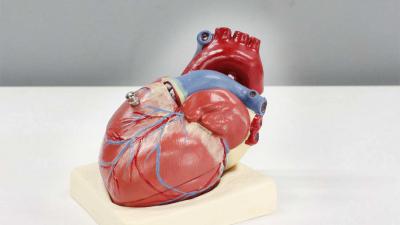Monday, 8. November 2021 – 10:45 am
“Thanks to this so-called FAME 3 study, heart specialists now know better which treatment is most suitable for whom,” says researcher Frederik Zimmermann of the Catharina Hospital. “With this knowledge, we can tailor the treatment even more specifically to the patient, with greater safety and better results. Customized care! Good news for our heart patients.” The study is the largest study in the world to compare angioplasty with bypass surgery for narrowings in all three coronary arteries; 48 hospitals worldwide participated in the study.
Reason for research
Patients with stenosis in the coronary arteries are divided into patients with stenosis in one, two or all three coronary arteries. In patients with narrowing of one or two coronary arteries, angioplasty is generally chosen because it gives the best results and the least complications. In contrast, in patients with narrowing of all three coronary arteries, bypass surgery has traditionally been considered the best treatment option.
In recent years, the technique of angioplasty has been greatly improved due to the availability of better stents and the so-called Fractional Flow Reserve (FFR) method, which allows better determination of where and how exactly stents should be placed. The objective of the FAME 3 study was to investigate whether the results achieved by using modern stents and the FFR method in patients with stenosis in all three coronary arteries would be as good as after bypass surgery.
In the FAME 3 study, therefore, 1500 patients worldwide with strictures in all three coronary arteries referred for bypass surgery were randomly divided into 2 groups: one group who received the bypass surgery and one group where all the strictures had an angioplasty.
Patient groups compared
After one year, it was checked how many patients in both groups had died, had had a heart attack or had undergone another surgery. Past results indicated that the percentage of patients (with narrowing in all three coronary arteries) who experienced such a complication was about 18 percent after one year with angioplasty and about 12 percent with bypass surgery.
Conclusion
In the FAME 3 study, these percentages were found to be 10 percent and 6 percent, respectively. That means that angioplasty is vastly improved from what was known from the past. But the results of bypass surgery were also 50 percent better than expected. The conclusion is that in patients with strictures in all three coronary arteries, bypass surgery is generally still preferred. This is especially true when three or more complex deviations are involved.
In patients with less complex strictures in all three coronary arteries, better results are achieved with the placement of stents.
Frequent
Constrictions in coronary arteries (atherosclerosis) are common. 25 percent of the Dutch over the age of 50 and 40 percent of the Dutch over the age of 60 have one or more narrowings in the coronary arteries. The worse the narrowing, the higher the risk of angina, chest pain. If a coronary artery is completely closed, oxygen can no longer reach the underlying muscle tissue and part of the heart dies. In that case we speak of a heart attack.
– .


